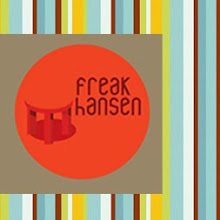
Estas piezas, son candelabros solo cuando se le colocan velas, de resto son piezas de arte, fundidas en hierro colado.
Espectaculares.
My love affair with Jens Quistgaard (above) started in the least exquisite of places: the filthy thrift stores of the Pacific Northwest. As a resourceful and enterprising (read: dirt poor) 20-something, I paid rent by reselling vintage clothing to fashionable, yet less resourceful, 20-somethings. In the face of growing competition and career fatigue, I found myself quickly bored of fighting punchy septuagenarians for scraps of dirty Dior. It was at this time that my attentions were drawn to Quistgaard’s mid-century tabletop items for Dansk International Designs. Cheap, plentiful and endlessly beautiful, it was like accidentally stumbling upon a Danish Modern goldmine. I soon found myself spending hours scouring the aisles for treasures marked with Quistgaard’s signature: IHQ.
A quick history: Jens Harald Quistgaard (a.k.a., IHQ, 1919–2008) was born in Copenhagen and showed great creative aptitude nearly from birth. Trained in the fine arts, he evolved into his prominent role as industrial designer through collaboration with American entrepreneur Ted Nierenberg. In the early 1950s Quistgaard had completed a prototype for his Fjord line of flatware – an amalgamation of warm teak and cool stainless steel which would come to set the sculptural tone of his future designs. Nierenberg discovered Fjord at a museum exhibition in Copenhagen and approached Quistgaard to put the flatware into mass production. Insistent that it could only be produced by hand, Quistgaard resisted but eventually agreed and Dansk was born. By 1954 Fjord was released to a post-war American public increasingly fascinated by the emerging Danish Modern style. As Dansk’s primary creative force from the 1950s thru the 1980s, Quistgaard designed and released literally thousands of products which revolutionized the way Americans saw housewares. Salad bowls, enameled pans and pepper grinders were no longer just utilitarian objects – his were functional objects of art that begged to be used – nor were they austere high design pieces isolated to the privileged class. Dansk marketed their goods through High Street shops, making access to well-designed goods a reality for the American middle class. For the average mid-century homemaker, Dansk wasn’t just a purveyor of Danish Modern; it absolutely was Danish Modern.
I may be older and (marginally) wiser than I was in my salad days, but Quistgaard’s designs still hold a place in my heart. Much to my delight, a savvy collector public has been turned on to Quistgaard’s brilliance in recent years. (As well as Quistgaard’s heinously underrated associate at Dansk, Gunnar Cyren.) While the days of Dansk’s cheap and plentiful status are quickly vanishing – a recent trip to San Francisco’s Paul Smith boutique revealed an assortment of vintage pieces selling for hundreds – it’s absolutely exciting to see Quistgaard receive the acclaim he deserves.
Please join the DWR Potrero Studio and filmmaker Stig Guldberg on Thursday, February 11 from 6 to 8pm for a screening of A Saucepan for My Wife, a documentary about the designer’s life. Guldberg will be on hand to answer questions, and there will be an exhibition of Quistgaard’s work, including DWR’s Teak Folding Stool and his vintage teak pepper mills (available for purchase).
Posted by Timothy Williamson, Studio Account Executive, Potrero Studio

